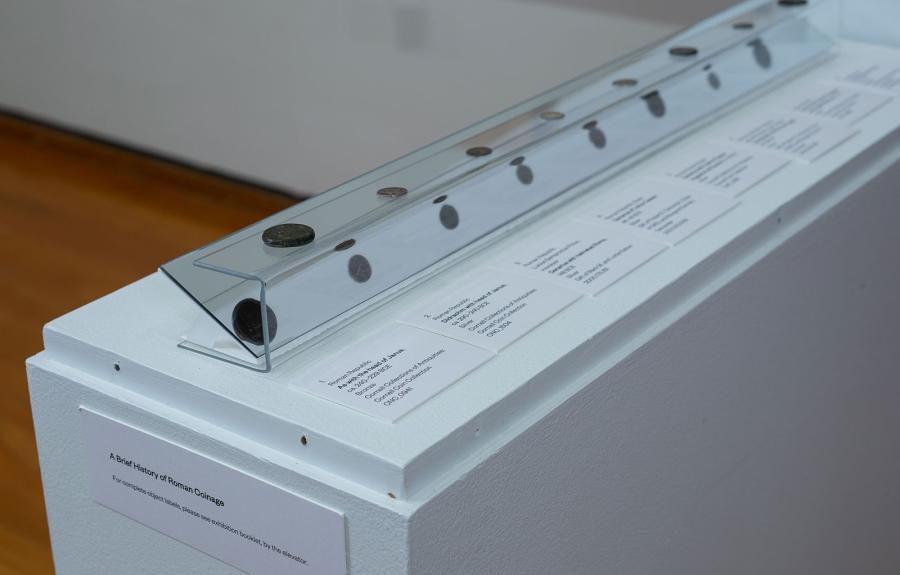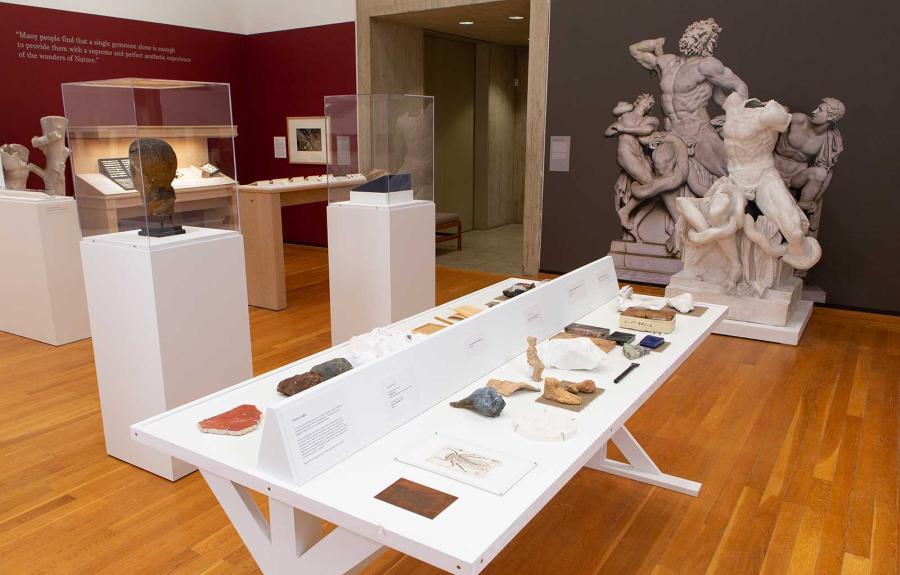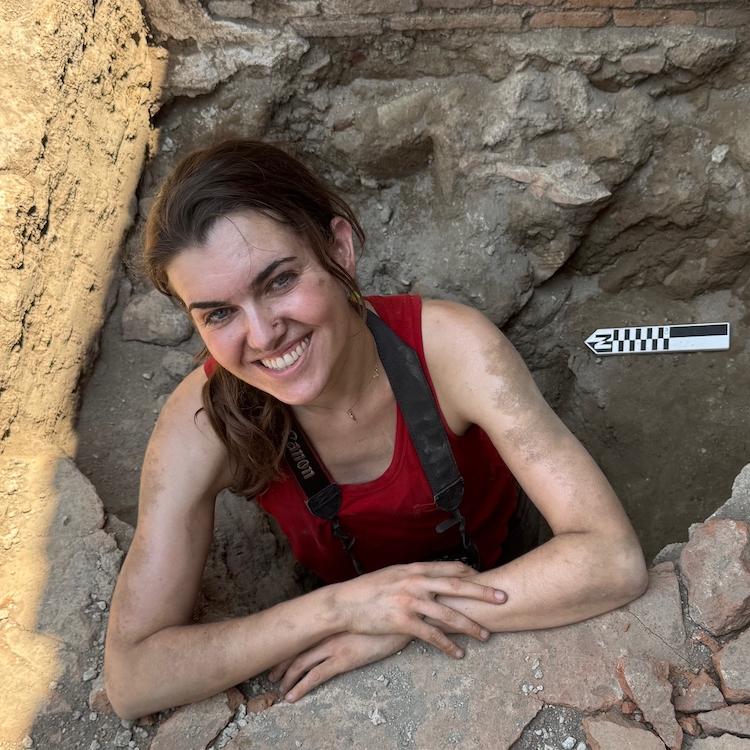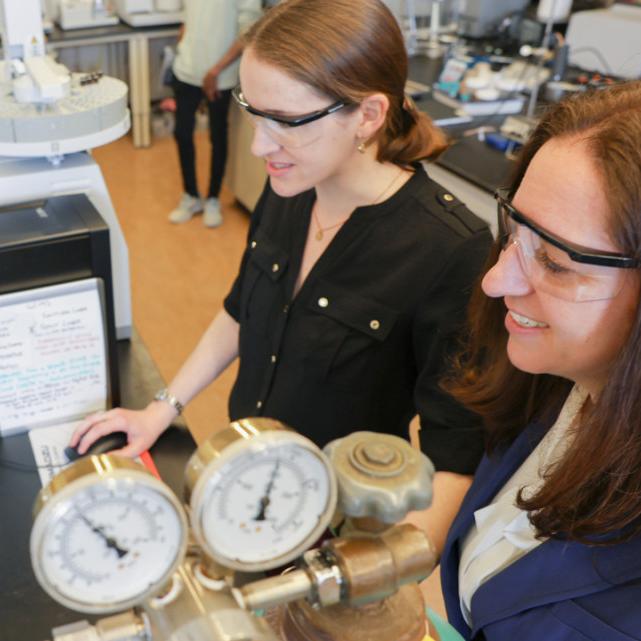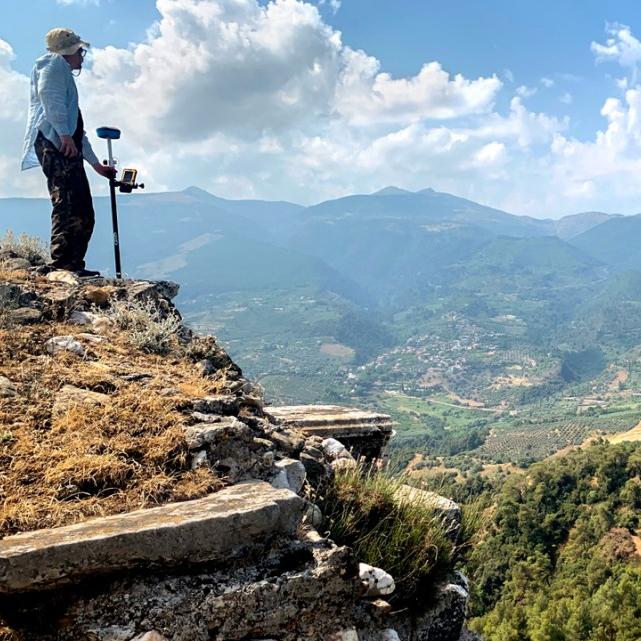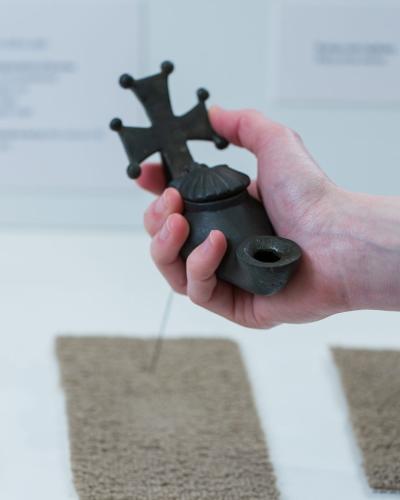Wonder and Wakefulness: The Nature of Pliny the Elder explores the manifold ways in which humans both interact with and are influenced by nature and its bountiful resources. Art, in its materiality and production, highlights this interconnectedness and dual agency between humans and the natural environment. To illustrate the intimacy and breadth of humans’ relationship with the natural world, the exhibition avails itself of a chronologically and formally diverse arrangement of texts, materials, and art media. With metals, microbes, manuscripts, and materials visitors can touch, Wonder and Wakefulness encourages different modes of viewing and appreciating nature’s influence from Pliny to today. Such an enormous project has required the involvement of several professional scholars and individuals at Cornell, including its undergraduate and graduate students. Highlighted below are four students who have been instrumental in the making of Wonder and Wakefulness: Evan Allen (PhD candidate, Art History), Olivia Graves (PhD student, Classical Art and Archaeology), Rodrigo Guzman Serrano (PhD student, Art History), and Hannah Master (senior undergraduate).
Evan Allen
As an experienced scholar in ancient practices of painting and plasterwork, Evan was more than happy to contribute to the ‘earths’ portion of the Wonder and Wakefulness exhibit. When Professor Verity Platt first mentioned her desire to mark Pliny’s 2000th birthday over a year ago, Evan was one of the first to put his name out as a potential collaborator. Over the years, Evan has independently formed a deep scholarly connection with Pliny and his discussion of painting in Book 35 of the Naturalis Historia. Having engaged with Pliny both in his dissertation and other academic research, Evan was eager to employ his knowledge for a public-facing project. When the exhibition team came together this past Fall, Evan offered to curate objects in the exhibit pertaining to painting and pigments. Central to Wonder and Wakefulness are two Roman frescoes of a griffin and a cupid, which offer points of departure for visitors to consider questions of materiality and technical practices, as well as the role of painted imagery in public and private life in the ancient world. Furthermore, sympathies between the arts of painting and photography latent in the writings of Pliny connect these frescoes to the photography and works of contemporary art on display nearby; these modern works are symptomatic of the aesthetics and dynamics of art making which had been introduced by Pliny and consequently passed down through the western art-historical tradition. In this way, Evan’s favorite part of the exhibit is its trans-historical sensitivity which is represented in the reception, transmission, appropriation, and reinterpretation of the Naturalis Historia itself; the exhibition offers several trajectories of inquiry and criticism for us today, while we simultaneously attempt to learn about the ancient world in the contemporary moment.
Works curated:
- Fresco fragment with griffin atop entablature, loaned by the Cleveland Museum of Art
- Fresco fragment with Cupid holding a theater mask, loaned by the Memorial Art Gallery of the University of Rochester
- Georgio Sommer, View of the Macellum, Pompeii, Albumen print, Johnson Museum of Art
Olivia Graves
Cornell is fortunate to have a Roman coin connoisseur and economy expert amongst its Classics PhD students! Olivia pursues questions of value, exchange, and social behavior in the Roman economy, thus making her an ideal candidate to guide the ‘metals’ section of Wonder and Wakefulness. She first became involved in the exhibit last spring, after talking about the project with Professor Annetta Alexandridis. This gave Olivia the opportunity to pitch an exhibition proposal as her final project for Professor Fred Gleach’s “Collecting Culture” seminar that semester. It was here that she came up with the ingenious and creative idea of displaying notes from the local ‘Ithaca HOURS’ currency alongside Roman coins (lent by the Tompkins County History Center), thus exhibiting how communities across time are connected through the exchange of material currency. Further, in order to create a narrative and keep viewers’ interests, Olivia had to consider several aesthetic approaches when developing her display strategies. For example, one coin case features a mirror behind each coin, allowing the viewer to see each side of the object. However, Olivia also had to make decisions of what not to include, such as deciding not to provide magnifying glasses so that viewers can appreciate the small size of the objects. This creative challenge has brought Olivia closer to the coins themselves, allowing her to handle them and appreciate their presentation, materiality, and size. Some of the objects scholars handle, such as these coins, don’t often have the opportunity to be displayed and seen by the public. Showing these materials is a rare occasion, and they may not have the opportunity to be displayed again for years. This makes the display and curation process all the more special to scholars like Olivia who are deeply invested in the pieces presented in Wonder and Wakefulness. Olivia has also enjoyed thinking about the potential of public education in exhibitions and having the opportunity to help communities think differently about objects that are often taken for granted, such as coins. She wants to help everyone think critically about money, what makes it valuable, and what structures we buy in to (literally!) when using money. In this way, Olivia has utilized the ‘metals’ section of Wonder and Wakefulness to prompt in its viewers larger conversations about materiality and social exchange across the ages.
A Selection of Works Curated:
- Electrum Stater with Lion, 630 BCE, Johnson Museum of Art
- Gold Aureus of Nero, 64-68 BCE, Cornell Coin Collection
- Silver Denarius of Caesar Augustus, 31-14 BCE, Cornell Coin Collection
- Silver-Plated Tetradrachm of Antigonus, 277-220 BCE, Cornell Coin Collection
- Ithaca HOURS Eighth Hour Note with Salamander, 1994 CE, loaned by the Tompkins County History Center
Rodrigo Guzman Serrano
Rodrigo’s introduction to Pliny has been an exciting and serendipitous journey! He is an Art History PhD student who typically works with the visualization of science, art, and technology, as well as the interaction between art and the technoscientific sphere. This has led him to research artists who explore biology and the life sciences in what is known as ‘bioart’ or ‘wet media’. When Rodrigo met with Andrew Weislogel, curator of European art at the Johnson Museum, he mentioned wanting to connect Pliny to contemporary concerns. Rodrigo immediately brought up the relevance and ingenuity of Jenifer Wightman’s works, which he had seen at the Mann Library, and was thus introduced to the Wonder and Wakefulness project. Wightman’s Chester River Transect, a triptych of glass containers holding natural sediments and ever-growing communities of microbes, uniquely highlights Pliny’s emphasis on the artistry inherent in natural materials and processes. Professors Platt and Weislogel additionally asked Rodrigo to work with the photograph and contemporary art sections of the exhibit, as these rely on modern technology and artistic methods. Curating modern and contemporary works came with its own challenges, however. For example, to see the changing communities of microbes in the Chester River Transect, Rodrigo decided to add a video to accompany the piece. Also included is a flashlight to allow closer viewing of the natural sediment. Additionally, William Henry Fox Talbot’s Bust of Patroclus required a screen to limit light exposure, due to the photograph’s sensitivity. Although Rodrigo had previously worked with contemporary art exhibitions, this was the first time he was part of such a diverse and encyclopedic show, all relating back to Pliny the Elder. This was not only an opportunity to learn about Pliny, but also about the seemingly infinite range of materials which prompt discussion about our relationship with the natural world. Moreover, Rodrigo appreciated the creative independence and involvement given to the student curators, as well as the teamwork, collaboration, and expertise of all involved. Through his knowledge of contemporary art, Rodrigo was uniquely able to bond Pliny the Elder’s world to ours by drawing connections between ancient and contemporary concerns about nature, art, technology, and human intervention.
Works Curated:
- William Henry Fox Talbot, Bust of Patroclus, 9 August 1842. Salt print from a calotype negative. Private collection.
- William Henry Fox Talbot, The Pencil of Nature, Anniversary Facsimile: No. 4, 1989 [1844]. Bound volume with lithographs. Loaned by the George Eastman House.
- Karen Knorr, The Pencil of Nature, 1994. Courtesy of the artist.
- Christine Elfman, Fragment VII (Triptych), 2017. Left and right: faded lichen dye on paper (anthotypes); center: silver gelatin print with lichen dye. Courtesy of the artist.
- Jenifer Wightman, Chester River Transect, 2015-present. Mud and water from the Chester River, eggs, manure, newspaper, plexiglass vessel, maple and walnut frame. Looped video, 1:39 mins. Courtesy of the artist.
- Ralph Gibson, Silhouette, Paris, from Artifacts, 1982. Gelatin silver print. Johnson Museum of Art.
- Ralph Gibson, Untitled, from If & (Silk), 1974. Gelatin silver print. Johnson Museum of Art.
Hannah Master
Hannah Master is certainly no stranger to the Johnson Museum at Cornell! Hannah, a current senior undergraduate majoring in Archaeology and Near Eastern studies, has been interning for Andrew Weislogel at the Johnson for three years. In 2020, Hannah started working as an intern in the museum’s print room and for the WIRE (Watermark Identification in Rembrandt’s Etchings) Project. As the Nancy Horton Bartels ’48 Scholar for Collections in 2021, she gained her first curation experience preparing for the museum’s exhibit, Visions of Dante. This year, Hannah was thrilled to be involved with the Wonder and Wakefulness project, which fell so closely within her areas of interest in the ancient world. In fact, Hannah’s undergraduate thesis is primarily focused on the Gorgoneion Antefix featured in the ‘Earths’ section of the exhibit! Hannah also curated other key items such as the Herculaneum charcoal, roof tile decoration, and terracotta dog gutter spout next to the gorgoneion. However, perhaps the most exciting aspect of Hannah’s involvement in Wonder and Wakefulness was her curation of the fabulous touch-table open to viewers. Here, visitors can touch and experience many of the natural materials on which the exhibit is based. The touch-table was initially Professor Weislogel’s idea, but Hannah (with the help of her cousin Lucy!) was charged with figuring out how to display and physically secure the materials. Hannah aimed to use the table as an educational narrative tool emphasizing the materiality of the exhibit, orienting each item on the table in the direction of exhibit objects made of that substance. For example, she laid the bronze and tin near the metals portion of the exhibit and put out plaster in the location nearest the cast of Laocoön. The touch-table is a key didactic element in the exhibit - everything displayed in Wonder and Wakefulness comes together through an emphasis on materiality, so having a tactile element was crucial to informing its visitors’ experience. Towards the end of the project, Hannah also took on more of a managerial role, organizing writers and making sure everything was in the right spot. Hannah’s years of experience at the Johnson Museum have pushed her to be more concerned about public education and how we translate scholarship to the public sphere. In her thesis, Hannah wants to think about provenance and its place today. The afterlives of excavated objects, the people who handle them, the issues they are used to talk about, and how they can be displayed for the public to see are all questions Hannah is determined to pursue.
Works Curated:
- Herculaneum, Carbonized fir wood, 79 CE, courtesy of the Cornell Tree-Ring Laboratory
- Gorgoneion antefix, Greek, ca. 6th century BCE. Johnson Museum of Art.
- Gutter spout in the form of a dog, Roman, ca. 1st century CE. Johnson Museum of Art.
- Fragments of a roof decoration, Roman, 1st century CE. Johnson Museum of Art.
- Votive head with curly hair (semi-relief), Etruscan, late 4th–early 3rd century BCE. Johnson Museum of Art.
- Josiah Wedgwood, Intaglio ring with Maenad figure, English, ca. 1760s. Collection of Andrew and Nancy Ramage.
- John DeAndrea, Tara, American, 2000. Johnson Museum of Art.
- Plinian Interactive Touch Table.


